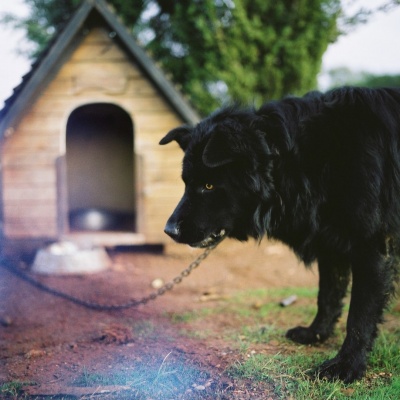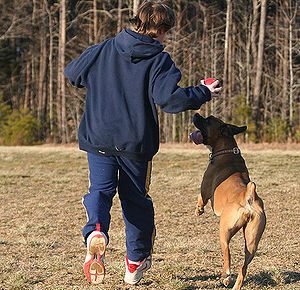
Have you ever walked past an area with a sad-looking dog chained or tied up? Dogs are social animals and need the company of humans. They want to be part of the family and belong in the home with you.
There are times when it may be necessary if a yard isn’t fenced or as a means of keeping the dog on one’s property, but only for a limited amount of time. Constantly confining a dog in this manner causes psychological damage as well as physical pain and injury.
Chained or tethered dogs usually suffer from neglect and abuse. They are not fed regularly, don’t have water, are exposed to all weather conditions, don’t receive proper veterinary care. They eat, sleep, urinate and defecate in the same place. Normally dogs do not eliminate in the same area they eat and sleep.
With neglect, collars become embedded in the dog’s neck causing pain, infection and sometimes death. In trying to escape, dogs can strangle in their own collars and chains.
In many instances they cannot defend themselves against other dogs or humans who taunt them. Unspayed females who are chained fall victim to stray males ,bringing unwanted litters into the world.
Dogs who are tethered for long periods of time undergo behavioral changes and many times become aggressive. These dogs are very often not trained, are unsocialized and their aggressive behaviors can result in attacks and bites.
If you tether your dog for a short time and provide shelter, toys and water, usually no harm is done.
Some States and local areas have anti-tethering laws which can include length of time tethered, type and length of tethering material. Check locally for the law in your area.
The ASPCA works tirelessly to help both States and localities successfully restrict dog chaining.
The HSUS recommends that if a dog must be tethered outdoors at certain times, it is provided with adequate attention, food, water and veterinary care. There should be shelter and room for the dog to eliminate away from the area where there is food and shelter.
Never use choke chains or any metal restraints. Animals should never be tethered during natural disasters such as floods, fires, tornadoes, hurricanes or blizzards.
Attaching a dog to a “pulley run” which is a line that allows a dog some freedom of movement can be used. However the same problems exist as with tethering.
You can help stop this practice. If you see a dog tethered, you might offer to buy it. Report to your local humane society or animal control or the police department, especially if the dog is sick, underweight, abused, has an embedded collar. Reports can be made anonymously.
Offer to help build a fence or a run or doghouse for the dog. Ask local shops if they have any wood to donate. Have an event like car washes, bake sales, etc. and donate the money for fencing. Ask if you can take the dog for walks. With the owner’s approval, offer the dog food, treats and/or toys.
Always be polite with the owner, remember that old saying about catching more flies with honey.
If the owner offers the dog to you, accept it even if you can’t give it a permanent home. Ask friends and family, post an ad in a newspaper, look for a no-kill shelter in your area.
Dogs give us total and unconditional love and loyalty. Don’t they deserve a better life than to be kept in chains.



